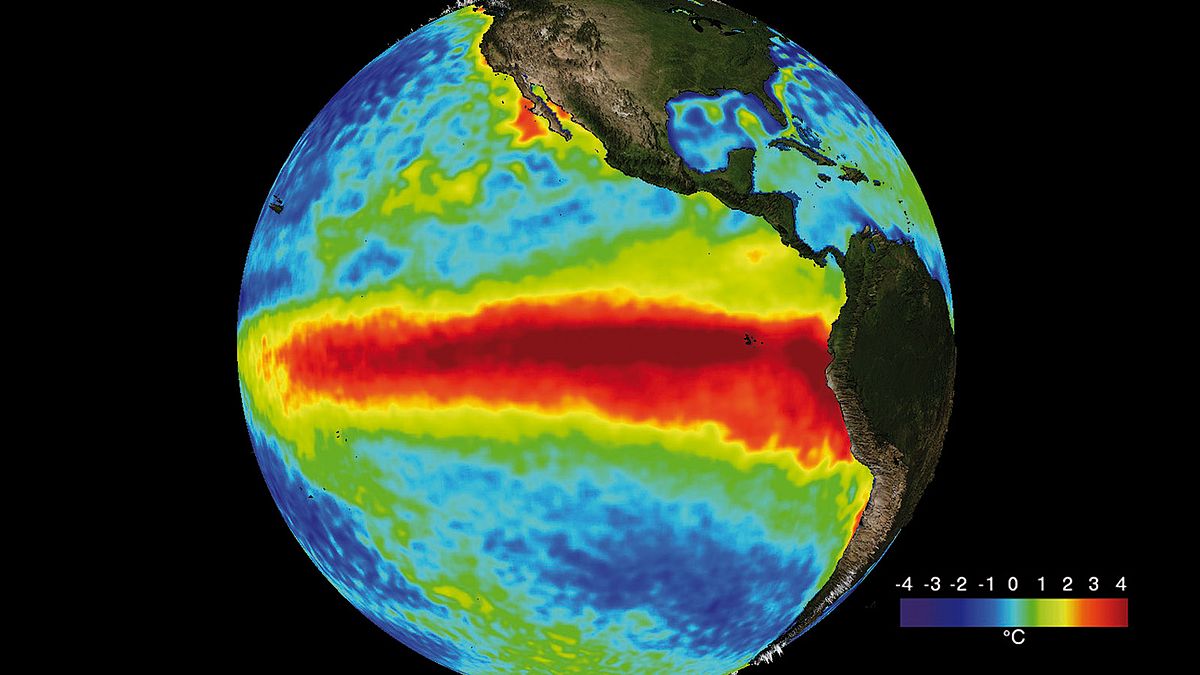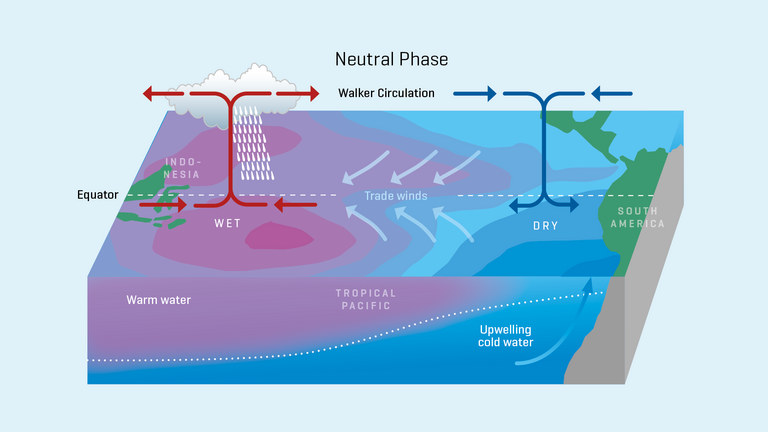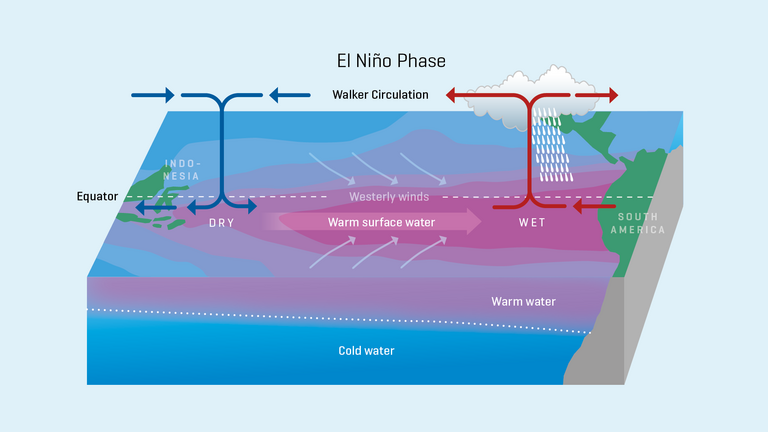How does El Niño Change in a Changing Climate?
The natural climate fluctuation El Niño / Southern Oscillation (ENSO) is caused by a complex interaction between the ocean and the atmosphere. Every two to seven years on average, the eastern tropical Pacific warms up, usually around Christmas, hence the name El Niño (in Spanish "the Christ child"). One of the strongest El Niños, which occurred in 1997, claimed more than 23,000 lives and caused US$33 billion in damage due to its extreme weather events. It is therefore of great interest to know when such events occur and whether they change in intensity and frequency in the context of global warming.
At GEOMAR, observational data and climate model experiments are used to investigate what influence climate change will have on El Niño. It was found that the atmospheric part of ENSO, the so-called Walker circulation, is very important for the strength of El Niño events, as it has a major influence on the course of El Niño via the shifting of the atmospheric convection regions in the tropics.
In addition, current questions being researched in the Maritime Meteorology unit in collaboration with scientists from around the world: Will the Walker circulation become stronger or weaker in climate change, how does the complex interaction of ocean and atmosphere change in the ENSO phenomenon and what influence does this in turn have on the strength and frequency of El Niño events?





